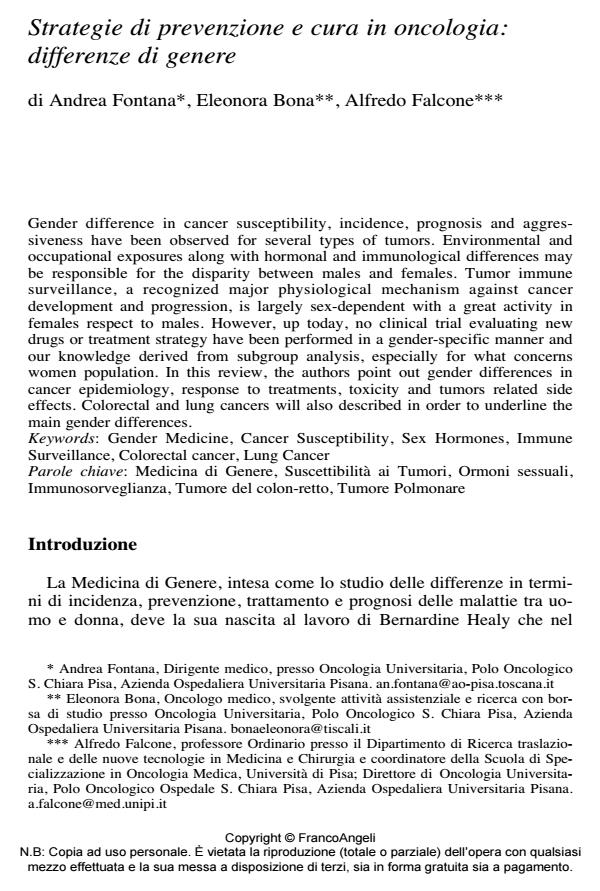Strategie di prevenzione e cura in oncologia: differenze di genere
Titolo Rivista SALUTE E SOCIETÀ
Autori/Curatori Andrea Fontana, Eleonora Bona, Alfredo Falcone
Anno di pubblicazione 2014 Fascicolo 2014/1
Lingua Italiano Numero pagine 14 P. 75-88 Dimensione file 526 KB
DOI 10.3280/SES2014-001007
Il DOI è il codice a barre della proprietà intellettuale: per saperne di più
clicca qui
Qui sotto puoi vedere in anteprima la prima pagina di questo articolo.
Se questo articolo ti interessa, lo puoi acquistare (e scaricare in formato pdf) seguendo le facili indicazioni per acquistare il download credit. Acquista Download Credits per scaricare questo Articolo in formato PDF

FrancoAngeli è membro della Publishers International Linking Association, Inc (PILA)associazione indipendente e non profit per facilitare (attraverso i servizi tecnologici implementati da CrossRef.org) l’accesso degli studiosi ai contenuti digitali nelle pubblicazioni professionali e scientifiche
Gender difference in cancer susceptibility, incidence, prognosis and aggressiveness have been observed for several types of tumors. Environmental and occupational exposures along with hormonal and immunological differences may be responsible for the disparity between males and females. Tumor immune surveillance, a recognized major physiological mechanism against cancer development and progression, is largely sex-dependent with a great activity in females respect to males. However, up today, no clinical trial evaluating new drugs or treatment strategy have been performed in a gender-specific manner and our knowledge derived from subgroup analysis, especially for what concerns women population. In this review, the authors point out gender differences in cancer epidemiology, response to treatments, toxicity and tumors related side effects. Colorectal and lung cancers will also described in order to underline the main gender differences.
Parole chiave:Medicina di Genere, Suscettibilità ai Tumori, Ormoni sessuali, Immunosorveglianza, Tumore del colon-retto, Tumore Polmonare
Andrea Fontana, Eleonora Bona, Alfredo Falcone, Strategie di prevenzione e cura in oncologia: differenze di genere in "SALUTE E SOCIETÀ" 1/2014, pp 75-88, DOI: 10.3280/SES2014-001007